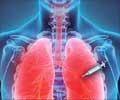About
The well -known celebrity Bernie Mac died of a lung disease. Although the culprit was reported to be pneumonia, his death drew attention to the little -known disease, which the comedian was long diagnosed with- Sarcoidosis. Pneumonia is an oft-occurring pulmonary complication of sarcoidosis. Bernie’s condition was in remission since 2005
(Greek- 'sark' + 'oid' meaning 'flesh –like')
Sarcoidosis, also called sarcoid or Besnier-Boeck disease, is an idiopathic immune system disorder that causes tissue inflammation and affects many body organs.
The term ‘sarcoidosis’ was coined in reference to the skin eruptions that occurs as a consequence of the disease.It commonly affects young adults,of both sexes, with a preponderence towards people from certain geographical regions, particularly women.
The incidence of sarcoidosis is at its peak among young adults between 20-29. A second peak is observed in women over the age of 50 years.
Once considered a rare disease, sarcoidosis is now a common enough disorder. Human bodies fight foreign invasion by setting off an inflammatory immune response. In the case of sarcoidosis, this response is increased several manifold, resulting in the production of small clusters of cells all through the body. When these clumps of cells become too big for comfort, they hinder the normal functioning of several organs.
It was originally thought that sarcoidosis stemmed from a state of acquired inertness. Improved techniques, such as bronchoalveolar lavage, provided an insight into the lungs of the patients and helped to throw light on the immunological disturbances that played a role in the disease.
What causes the disease is still an enigma but researchers believe that enviormental agents trigger an already existing predisposition.
The most common target of sarcoidosis are the lungs, which is affected in the majority (90%) of the cases. This is followed by the lymph nodes, the eyes and the skin. Despite these common targets, it must be noted, that the disease can affect any body part.
The clinical picture ranges from an asymptomatic state to a chronic debilitating condition that can result in death.The manifestation of the disease is not static, and can change with gender and race.
Symptoms tend to appear suddenly and may disappear or they may appear gradually and may be long-lasting. Individuals with the disease experience difficulty in breathing. It is also very common to find ulcers breaking out on their skin.
Initially, Sarcoidosis can often be confused with Tuberculosis. Sometimes a biopsy of a gland is done to differentiate the two condtions. In both these, there maybe a ’granuloma’ seen under the microscope; however the granuloma is the caseating type in Tuberculosis and the non-caseating type in Sarcoidosis
In two-thirds of the cases the disease is mild and will resolve on its own.It may not have lasting effects and is likely to go into remission.
In some it may be severe and unremitting, causing progressive damage to multiple organs in its wake. Complications may be present in 20-25% of patients. As Sarcoidosis progresses inflammatory nodules (granulomas) may appear which could clear by themselves. In some cases, the tissues do not heal and the inflammed tissues remains scarred for life.
Death may occur due to respiratory failure resulting from scarring of lungs or from heart failure.
Up until now, there is no cure for Sarcoidosis. The disease continues to puzzle even the medical fraternity and is often misdiagnosed.
Besides its devastating physical impact, the uncertainty of the disease can be emotionally unsettling. It is not uncommon for Sarcoidosis patients to suffer from depression.







